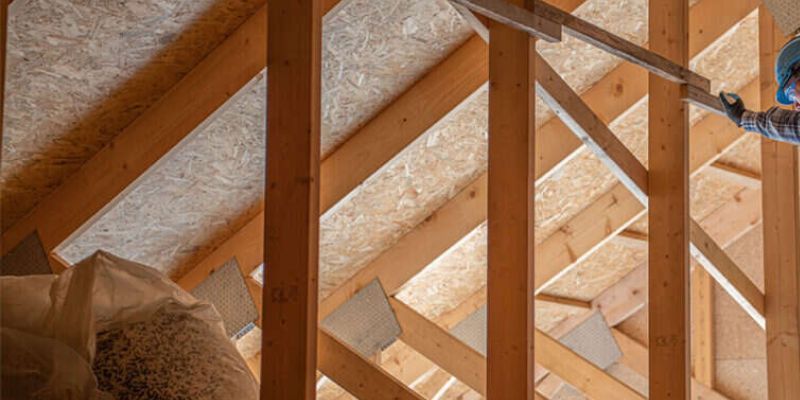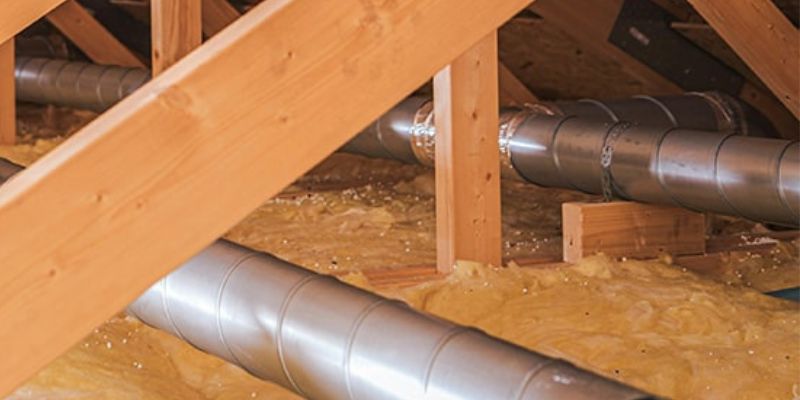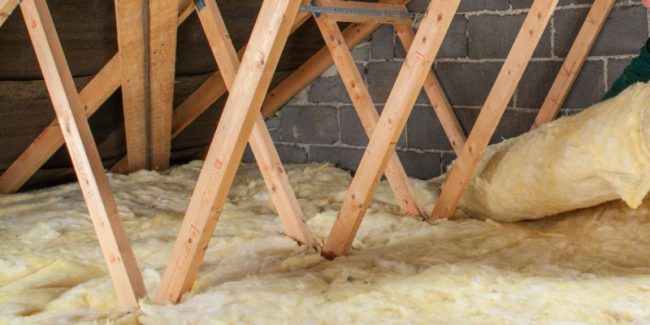If you live in Ireland, you know how important it is to keep your home warm during the colder months. Heating bills can quickly rise, especially if your home is losing heat. One of the most effective ways to stop heat loss and make your home more energy-efficient is by installing loft insulation.
In this article, we’ll explain what loft insulation is, how it works, why it’s so beneficial, and how it can save you money while making your home more comfortable.
What Is Loft Insulation?
Loft insulation is a layer of material placed in your attic or roof space to stop heat from escaping through the top of your house. Since heat naturally rises, up to 25% of your home’s warmth can be lost through the roof if it’s not insulated. By adding loft insulation, you create a barrier that traps the warmth inside during winter and keeps unwanted heat out during summer.
In Ireland’s cool and often damp climate, this is especially important for comfort and energy savings.
How Loft Insulation Works
Heat moves from warm areas to cooler areas. Without insulation, the heat you produce from your central heating escapes quickly through the roof. Loft insulation slows this process down by trapping air in its fibres or foam. This trapped air acts as a barrier, keeping your home warm for longer without using as much energy.
The result? You spend less on heating, and your home stays comfortable for longer.
Benefits of Loft Insulation

-
Lower Heating Bills
By keeping more heat in your home, you’ll use less energy to maintain a comfortable temperature, which means lower gas or electricity bills. -
Better Comfort All Year
Loft insulation doesn’t just help in winter. In summer, it also prevents excessive heat from entering your home, keeping your rooms cooler. -
Helps the Environment
Using less energy reduces your carbon footprint. This makes loft insulation a great way to be eco-friendly. -
Long-Lasting Solution
Once installed, good loft insulation can last for decades with little or no maintenance. -
Increases Home Value
Energy-efficient homes are more attractive to buyers. Loft insulation can improve your home’s BER (Building Energy Rating), making it a better investment.
Types of Loft Insulation
If you’re installing loft insulation in Ireland, there are a few common options:
-
Blanket Insulation (Rolls or Batts) – Made from fibreglass, mineral wool, or natural materials like sheep’s wool. It’s the most common and affordable type.
-
Loose-Fill Insulation – Lightweight materials such as cellulose or mineral wool blown into the loft. Good for hard-to-reach spaces.
-
Spray Foam Insulation – A liquid that expands to fill gaps. Excellent for sealing but must be installed by professionals.
Your choice will depend on your budget, the structure of your home, and how you use your loft space.
Signs Your Loft Needs Insulation or an Upgrade
-
High heating bills compared to similar homes
-
Rooms upstairs that feel colder than the rest of the house
-
Draughts coming from the loft area
-
No visible insulation when you look in the attic
-
Existing insulation that looks thin, damaged, or damp
If you notice any of these, it may be time to install or upgrade your loft insulation.
How Loft Insulation Is Installed
The installation process is simple, especially for professional installers:
-
Inspection – The loft is checked to see what type of insulation is needed.
-
Preparation – Any debris is cleared, and wiring or pipes are made safe.
-
Fitting the Insulation – Rolls, batts, or foam are installed between and over the joists.
-
Final Checks – The installer makes sure everything is fitted correctly, with no gaps.
For safety reasons, professionals should handle spray foam or large loft spaces. However, small blanket insulation jobs can be done as a DIY project.
Grants and Support in Ireland
The Irish government, through the Sustainable Energy Authority of Ireland (SEAI), offers grants to homeowners for loft insulation. This can cover a large part of the cost, making it more affordable.
To qualify, your home must meet certain requirements, and the work must be carried out by an SEAI-registered contractor. Many insulation companies in Ireland can guide you through the grant application process.
Maintaining Your Loft Insulation

Loft insulation requires very little upkeep, but you should:
-
Check every few years for signs of dampness or damage
-
Avoid compressing the insulation with heavy storage items
-
Ensure ventilation is maintained to prevent moisture build-up
Keeping it in good condition ensures it works effectively for many years.
Extra Energy-Saving Tips
Loft insulation works best when combined with other energy-saving steps:
-
Seal Gaps and Draughts – Around doors, windows, and floorboards.
-
Use Thick Curtains – Especially on cold nights.
-
Upgrade Heating Controls – A programmable thermostat can reduce energy use.
-
Insulate Your Hot Water Tank and Pipes – Helps keep water warm for longer.
Why Loft Insulation Is a Smart Investment
Some people worry about the upfront cost of loft insulation, but it pays for itself in a few years through reduced heating bills. Once installed, the benefits continue for decades without extra costs. Combined with the available grants, it’s one of the most cost-effective home improvements you can make.
Conclusion
Loft insulation is one of the simplest, most effective ways to boost your home’s efficiency in Ireland. It keeps heat inside during winter, prevents overheating in summer, lowers energy bills, and helps protect the environment.
Whether you’re building a new home, renovating an old one, or just looking to save on heating costs, loft insulation is a smart choice. With grants available and professional installers ready to help, there’s never been a better time to upgrade your home’s efficiency.
FAQs
1. How much can loft insulation save me?
You could save up to 25% on heating bills, depending on your home’s size and condition.
2. How long does loft insulation last?
Most types last 20–40 years with minimal maintenance.
3. Can I get a grant for loft insulation in Ireland?
Yes, SEAI offers grants to help cover the cost.
4. Will loft insulation make my home too warm in summer?
No, it helps maintain a steady temperature all year.
5. Can I install loft insulation myself?
Yes, blanket insulation can be a DIY job, but for spray foam or large areas, it’s best to hire a professional.

